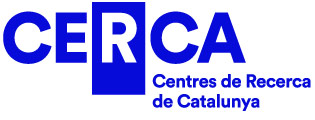18/09/2024
16/09/2024
Organitzador tercera trobada del projecte Cultur-Monts del programa Interreg Sudoe
16/09/2024
Organitzador segona trobada del projecte Cultur-Monts del programa Interreg Sudoe
16/09/2024
Organitzador primera trobada del projecte Cultur-Monts del programa Interreg Sudoe
5/09/2024
Aigua i pas: els camins-barrancs de la Plana de Castelló
5/09/2024
Estudia el paisatge romà i entendràs l’economia: els casos dels agri de Saguntum, Valentia i Tarraco
5/09/2024
Organització sessió 5: Del campo a la ciudad. Producción de alimentos, explotación de recursos naturales y actividad artesanal en la Hispania romana (s. II a.C. – V d.C.)
4/09/2024
Investigating animal mobility in the Roman world. A geometric morphometric study of faunal remains from north-eastern Iberian and Italian peninsulas
4/09/2024
Els sistemes de captació d’aigües als aqüeductes romans del Camp de Tarragona
31/08/2024





